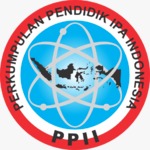Eksplorasi Limbah Tulang Sapi Sebagai Sumber Biomaterial Hidroksiapatit
DOI:
https://doi.org/10.29408/kpj.v6i2.6885Keywords:
Biomaterial, Preparasi Hidroksiapatit, Rasio Ca/PAbstract
The abundance of cow bone waste in West Nusa Tenggara has not been in line with proper treatment. Cow bones contain a lot of apatites that can be modified into raw materials for the fabrication of hydroxyapatite. The need for hydroxyapatite as bone graft biomaterials increase in Indonesia continuously. The study aims to identify the appropriate preparation method for extracting hydroxyapatite from cow bone. Mechanical and thermal techniques are used to extract the cow bone. The method utilizes heat energy and mechanical energy to achieve hydroxyapatite. The extracted powder from cow bone was identified the ratio of Ca/P using EDX, calculated the yield of the fabricated product, measured its bulk density, and placed its functional group by FTIR. The results reveal that the best preparation method to acquire hydroxyapatite is by extracting the compact bone of bovine. The compact bone is macerated with alcohol for 12 hours and calcined at a temperature of 9500C for three hours. The apatite has a Ca/P ratio of 2.25, yielding 66.53%, and a bulk density of 1.18 g/cm3. Typical hydroxyapatite groups that emerge from apatite powder are the presence of functional groups OH, PO43-, and CO32-. This preparation method also has powders with unidentified C-H functional groups. The fact of this variety indicates the powder does not contain organic elements that can be at risk of rejection by the human body. Therefore, the apatite extracted from cow bone can be used as a safe biomaterial for the human body.References
Adi Puspa, K., & Asmi, D. (2014). Sintesis dan Karakterisasi Biokeramik Hidroksiapatit Bahan Tulang Sapi pada Suhu 800-1100. Teori Dan Aplikasi Fisika, 02(02), 125–130.
Afifah, F., & Cahyaningrum, S. E. (2020). Sintesis Dan Karakterisasi Hidroksiapatit Dari Tulang Sapi (Bos Taurus) Menggunakan Teknik Kalsinasi Synthesis And Characterization Of Hydroxyapatite From Cow Bones (Bos Taurus) Using Calcination Techniques. UNESA Journal of Chemistry, 9(3), 189–196.
Adi Puspa, K., & Asmi, D. (2014). Sintesis dan Karakterisasi Biokeramik Hidroksiapatit Bahan Tulang Sapi pada Suhu 800-1100. Teori Dan Aplikasi Fisika, 02(02), 125–130.
Afifah, F., & Cahyaningrum, S. E. (2020). Sintesis Dan Karakterisasi Hidroksiapatit Dari Tulang Sapi (Bos Taurus) Menggunakan Teknik Kalsinasi Synthesis And Characterization Of Hydroxyapatite From Cow Bones (Bos Taurus) Using Calcination Techniques. UNESA Journal of Chemistry, 9(3), 189–196.
Budiatin, A. S., Hikmawati, D., Putra, A. P., Siswanto, Samirah, Aryani, T., Wenny, P. N., & Novitasari. (2020). Exploration of bovine bone waste as source of bovine hydroxyapatite synthesis and its composite with gelatin-hydroxypropylmethyl cellulose as injectable bone substitute. Ecology, Environment and Conservation, 26, S135–S140.
Guo, X., Yan, H., Zhao, S., Li, Z., Li, Y., & Liang, X. (2013). Effect of calcining temperature on particle size of hydroxyapatite synthesized by solid-state reaction at room temperature. Advanced Powder Technology, 24(6), 1034–1038. https://doi.org/10.1016/j.apt.2013.03.002
Ikhsan, I., Gunawarman, G., & Yetri, Y. (2018). Karekteristik Hidroksiapatit (HA) Dari Limbah Tulang Sapi dengan Metode Mekanik-Termal. Jurnal Ilmiah Poli Rekayasa, 13(2), 43. https://doi.org/10.30630/jipr.13.2.89
Khoo, W., Nor, F. M., Ardhyananta, H., & Kurniawan, D. (2015). Preparation of Natural Hydroxyapatite from Bovine Femur Bones Using Calcination at Various Temperatures. Procedia Manufacturing, 2(February), 196–201. https://doi.org/10.1016/j.promfg.2015.07.034
Mangkuasih, S. M., & Rohmawati, L. (2021). Sintesis Hidroksiapatit dari Tulang Ikan Sapu-Sapu (Hypostomus plecostomus) dengan Metode Presipitasi. Jurnal Teori Dan Aplikasi Fisika, 9(2), 229. https://doi.org/10.23960/jtaf.v9i2.2818
Marta, H., Tensiska, & Riyanti, L. (2017). Chimica et Natura Acta. Chimica et Natura Acta, 5(3), 124–131.
Sari, R. N., Fransiska, D., Dewi, F. R., & Sinurat, E. (2022). Karakteristik Sediaan Hidroksiapatit dari Cangkang Kerang Simping (Amusium pleuronectes) dengan Perlakuan Suhu dan Waktu Sintesis. Jurnal Pascapanen Dan Bioteknologi Kelautan Dan Perikanan, 17(1), 31. https://doi.org/10.15578/jpbkp.v17i1.797
Shabani, M., & Faraji, G. (2020). Processing and Characterization of Natural Hydroxyapatite Powder from Bovine Bone a. Journal of Ultrafine Grained and Nanostructured Materials, 53(2), 204–209. https://doi.org/10.22059/jufgnsm.2020.02.12
Suci, I. A., & Ngapa, Y. D. (2020). Sintesis dan Karakterisasi Hidroksiapatit dari Cangkang Kerang Ale-Ale Menggunakan Metode Presipitasi Double Stirring. Cakra Kimia, 8(2), 73–81.
Sufiani, N. (2022). Pengaruh Lama Ekstraksi Menggunakan Naoh Terhadap Karakteristik Nanokalsium Dari Tulang Sotong (Sepia Sp.). JFMR-Journal of Fisheries and Marine Research, 6(1). https://doi.org/10.21776/ub.jfmr.2022.006.01.15
Troboslivestock.com. (2021). Pemerintah NTB Resmikan Program 1.000 Desa Sapi. Troboslivestock.Com.









